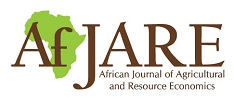Preferences for water and willingness to pay for water supply improvements among rural households in the Upper Ewaso Ng’iro North Catchment Area: A discrete choice experiment
Simon Ng’ang’a Mwaura & Issaac Maina Kariuki
Abstract
Rural areas across the developing countries in every region of the world lag behind their urban counterparts in many important sectors and, most importantly, in improved water supply services. Financing is a key hindrance to bridging this gap. An alternative financing mechanism is the demand-driven approach or the service delivery approach, which stresses the importance of incorporating user demand, mostly measured as willingness to pay (WTP) for improvements in water supply services. We employed the discrete choice experiment (DCE) methodology to investigate rural households’ preferences for various water supply improvement options and their economic value, using a sample of 585 households from the Upper Ewaso Ng’iro North Catchment. Data was analysed using the multinomial logit, conditional logit, the random parameters mixed logit and the willingness to pay space (WTP-space) random parameters mixed logit models without interactions. The results show that households prefer good-quality water, a private tap, water with high pressure and a good quantity that is available daily without interruptions. Households in the study area are heterogeneous with respect to water preferences. We recommend that upcoming rural water improvements offer rural multi-use water systems, balancing the need for quality water delivered through a private tap, with high pressure and quantity, and that is available daily at the least cost. Policy interventions should thus focus on enhancing water quality, while offering flexible service packages that accommodate different household preferences.
